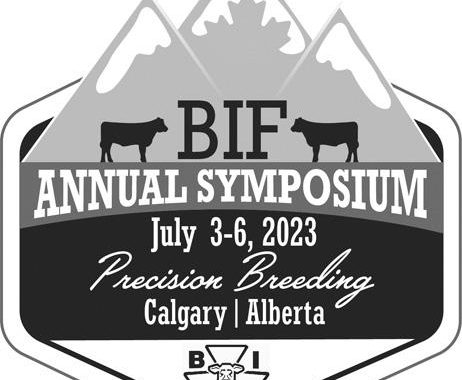The Beef Improvement Federation’s (BIF) aim is to drive improvements in efficiency, profitability, and the sustainability of beef production. The annual BIF convention has become an anticipated forum to discuss the challenges and opportunities facing beef production, and allow the exchange of ideas and best practices between the various sectors involved in beef production spanning research, and commercialization through to the producers and circling back.
Perhaps most closely aligned with Gentec’s mission, the July 4 session titled Advancements in Producer Applications featured a 3-part session chaired by Dr. Darrh Bullock, University of Kentucky, that included talks titled: Why Should Commercial Cattleman Be Interested in Genomics (Troy Rowan), VPB+: How Sustainability and Genomics Fit Together (Shannon Argent), and a Panel Discussion: A Business Case for Using EPDs.
Given that there is no interest like self-interest, we will focus on the panel discussion, which featured Gentec’s own Management Advisory Board member, Sean McGrath. Sean should be familiar to our newsletter readers as a poly-math cow/calf producer and owner of the Centennial Round Rock Ranch located near Vermillion, Alberta, but if you would like a refresher, click here.
Sean’s message was a summary of his approach to starting with the end in mind. He runs DNA on his entire herd, and aims to achieve 3 targets: $1,000 / head gross margin, to minimize cow herd depreciation (maximize lifetime productivity) and, given the vast geography and constrained labour on his operation, he budgets about 10 minutes per cow per year. The prognosis for any cow exceeding its labour allowance is… dinner.
Other members of the panel were Paul Bennett of Knoll Crest Farm out of Red House, VA, and Donnell Brown of RA Brown Ranch based out of Throckmorton, TX.
Knoll Crest prides itself on being a full-service provider of genetics using EPDs to provide bulls, cows, embryos, and semen targeting the commercial producer. The Knoll Crest approach is to provide the commercial producer with a differentiated suite of traits that provide the traits commercial producers need and not what they have. Paul’s main message was that the farm uses EPDs to provide cost-effective genetics and “service, service, service”. Part of this service involves a 12-month unconditional guarantee of the performance of the bull.
Interestingly, a comment was also made regarding removing the data from the catalogues as the information overload just confuses many potential clients. So Knoll Crest removed the details and instead focus on client education and decreasing the degree of information that they need to know to make an informed decision. The data provided is comprehensive enough that 50-60% of bulls are sold sight unseen. Quality, service and simplification.
RA Brown Ranch focuses on Quarter horses in addition to registered pure breed and commercial cattle. As tends to be the case with cattlemen (including Sean and Paul), Donnell’s message regarding the use of EPDs was clear and concise: EDPs are best used for selection, marketing, and risk management.
The strategies that flow outwards from these concepts should encourage producers to select for animals that match the environment they are to be raised in. Environmental fit is critical, and, in some cases, small distances matter a lot. The next step involves knowing what you are selling (marketing), and how to select the bulls to augment the existing characteristics within your cow herd to make their offspring command the highest price from those who will buy them. And lastly, to thine own self be true. Understand the strengths and limitations of your operation and management style. Make sure that your breeding system fits your own personal inclinations. If you are an interventionist (or have an excess of labour), you may be able to thrive with a high-maintenance herd. On the other hand, if your thought process aligns more closely with Sean’s approach, you might want to work with a different set of EPDs.

